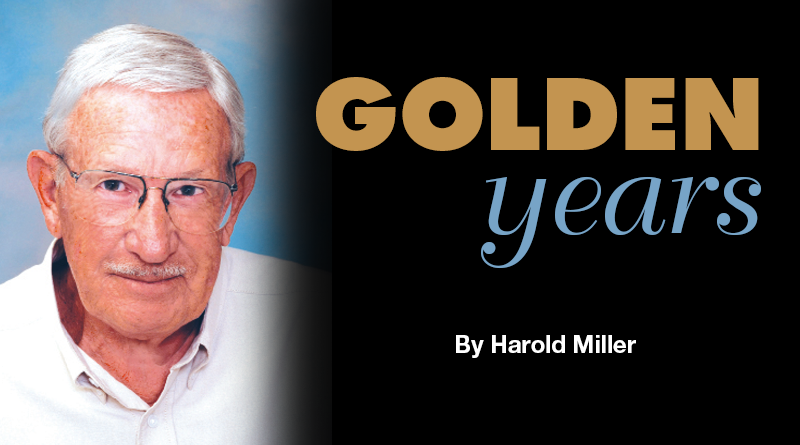Upstate University Hospital Saved My Life
By Harold Miller Email: hmiller@mcsmms.com
My friends and I awoke to an unseasonably warm day that morning of Nov. 5, 1961.
We were on a deer hunting expedition and had camped overnight in a pickup truck, which had a homemade enclosure with plywood bunk beds. The truck was parked in the middle of a meadow surrounded by thick woods, close to Panther Lake in the foothills of the Adirondack Mountains.
The plan was that the herd of deer was in the woods and would start to move looking for food as the sun came up. I positioned myself in the center of the woods.
As the sun rose, my companions flushed the deer toward me.
Then a shot rang out — I felt the deer slug pass through my belly! I fell heavily to the ground yelling, “you shot me!”
From that point on, the cool-headed action of my companions was as responsible for saving my life as the careless shot was endangering it.
The first thing Mark, one of my companions, did was take off his jacket and tie a tight tourniquet between the heart and the wound (which by now was gushing blood). Then the other people scrambled to the truck, drove up a logging road just a couple of hundred feet away from where I laid writhing in pain. They ripped out one of the plywood bunks. They used it as a stretcher to load me into the back of the truck.
Everything that happened from then until my arrival at the hospital depended on luck and split-second timing or I would not be writing this story. The doctor later told me that I had less than five minutes of life left in my body when I arrived at the hospital.
As the truck pulled up the Panther Lake Road, my friends spotted a game warden sitting in his car. The game warden said, “follow me” and led them to Marvin Brown, a physician in Constantia. He took our convoy over back roads directly to the doctor’s house, saving many precious minutes. The game warden located Dr. Brown, who was sitting on the porch reading the newspaper, and brought him to the truck.
After a quick glance, the doctor disappeared into the house and reappeared a few seconds later with his black bag. The doctor injected a shot of morphine. Then he retreated into his house and got on the phone.
He was not capable of handling the massive wound, so he called Upstate University Hospital in Syracuse to make arrangements for my arrival. The local fire department ambulance arrived a few minutes later.
I overheard Dr. Brown explain to the driver that every second counted.
They strapped me into a gurney solidly bolted to the floor of the ambulance and my friend, Mark, crawled in beside me. The ambulance driver took the doctor’s words to heart and raced down the highway toward the newly opened I-81.
When the ambulance reached the super-highway, he opened it up to 90 miles per hour. Fortunately, there wasn’t much traffic at 8 on that quiet Sunday morning. The red and white Cadillac ambulance with sirens screaming was very audible and visible. The whole trip blurred through my semi-conscious mind. By that time the pain had become intense, but that was a way of mitigating pain. Mother Nature has a way of mitigating pain by shocking the nervous system which in turn slows down everything — including the heart.
This factor was important in slowing the flow of blood.
We arrived at the hospital in 35 minutes — a trip that would have normally taken an hour. I was still conscious as the gurney was wheeled into the operating room. The last thing I remember was our parish priest laying the purple sash across my chest administering the last rites. A reported condition of me was moribund (dead).
Meanwhile, Janet, my wife, was driving to church with the kids from our house on the south side of Syracuse. She would later find out that our priest passed her in the driveway of our church to administer last rites to me.
Dr. Leon Berman was preparing for what would be a long drawn-out operation (more than four hours) to put life into a dead body.
He was the only surgeon on staff to handle the situation and Upstate University Hospital is one of the only hospitals in the world capable of doing the job.
There would be many months of future surgery to repair the massive damage that a 12-gauge deer slug did to my intestines. Many months of recuperation ahead. A second operation to reconnect the colon; a third to strengthen the abdominal wall with titanium mesh.
Sixty years after Dr. Berman helped me win the battle of life caused by my hunting accident (he has since died) I still face melanoma cancer. This skin cancer is mainly caused by exposure to the sun. We spend half of the year at our condominium in Florida, which is on the beach near Palm Beach. The sun shines almost every day and we spend most of our time on the beach, at our pool or driving my convertible with the top down.
My current doctor, Amar Suryadevara, has been trying to teach me how to avoid direct exposure to the sun, which is closer to the equator in Florida. I should always be under cover (broad brim hat and sun-proof lotion on arms, legs and any other flesh exposed to the sun).
Upstate University Hospital can provide every need in modern medicine. Syracuse is the fifth-largest city in Upstate New York and growing fast. I owe my life to Upstate University Hospital and all their dedicated people.

